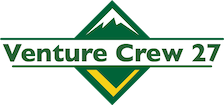Sleeping System Guide
Washington 2010
Picking the right sleep system can be intimidating if you don’t have much prior experience with outdoor gear. Since tents and tarps are provided by the crew, the key things you will need are a sleeping bag and a pad.
Sleeping Bags
What kind of bag?
Sleeping bags can be broken into three categories by what insulation is used to keep the interior warm.
Goose Down: Goose down is simply the most thermally efficient fill material available. Lightweight, compressible, and incredibly warm, down continues to be the bag choice of serious backpackers and mountaineers the world over. Properly cared for, goose down bags will last for many years.
Water-Resistant Goose Down: These bags use goose down that has been treated with a special hydrophobic compound on a molecular level to keep the down from getting wet and losing its thermally efficient properties. Like regular goose down, they are lightweight, compressable, and warm but they are also significantly more expensive.
Synthetic Fills: Providing warmth with the ability to insulate when wet, synthetic bags are excellent for trips where excessive moisture is a factor. Backpacking through rainy climates or kayak expeditions are two scenarios where a synthetic bag may be the best choice.
T27/V27 Thoughts?
We strongly favor synthetics. Many of our outings, from canoe expeditions to snow camping, make it difficult to keep gear dry. Since down’s thermal efficiency is lost when it gets wet, synthetics are the best affordable choice. However, if all you have is a normal goose down bag, a bivy sack and water proof stuff sack can provide a lot of protection against the bag getting wet.
Klondike, Super Trip, and outings in between, will I need two sleeping bags? A four season bag will probably be too hot for most of our outings. A three season bag can be “upgraded” with a liner or bivy sack. Most liners provide an additional 10 – 15° F of protection, and a bivy typically adds 5 – 10° F protection. So a 20° F bag, with a liner and bivy, should provide protection in the range of -5 – +5° F. The downside is that the bag, liner, and bivy will all take up space in your backpack. Bottom line, layers in sleeping gear, just like outerwear, are very flexible, but add cost and weight.
In outdoor gear, top brands earn their reputation, but come with a premium price for that reputation. Some of the top brands in sleeping bags are: Marmot, Mountain Hardwear, The North Face, Sierra Designs, and Western Mountaineering.
Sleeping Pads
What kind of pad?
Sleeping pads can be broken into three categories by their construction.
Air pad: Air pads come in a wide variety of styles, from lightweight ones ideal for backpacking up to extra-thick ones that are great for car camping. These are some of the most comfortable to sleep on but are also among the most expensive, especially if you are looking for one extra lightweight. They are also more susceptible to damage in the field, namely punctures.
Self-inflating pads: These pads offer a combination of open-cell foam insulation and air. Self-inflating pads offer you a broad range of options for warmth, size and cost. Typically, they are also heavier and bulkier than their air pad cousins.
Closed-cell Foam: These basic backpacking pads are made of dense foam filled with tiny closed air cells. They’re usually rolled up or folded in a Z formation. They’re lightweight, inexpensive, durable and offer consistent insulation in all conditions. However, they are also less comfortable, stiff, firm, and tend to be bulky.
T27/V27 Thoughts?
We don’t have a strong opinion on sleeping pads generally, except that we are firmly against air pads. Self-inflating pads and closed-cell foam will provide some insulation even if damaged. We recommend you try several options (take advantage of stores’ free demos) to find something that meets your preferred balance of weight, comfort, and durability.
That being said, some outings require a modification to your normal sleeping set up, such as snow camping. For snow camping, because the cold air and ground temperature can have an even greater impact on the air inside an air pad or self inflating pad, we recommend that you either bring only a closed-cell foam pad or bring both a foam pad and a self-inflated pad and place the foam pad underneath to maintain greater warmth.
Some of the top brands in sleeping pads are: ThermaRest, Big Agnes, NEMO, and Sea-to-Summit.
Dry, Compression Stuff Sacks
Most sleeping bags come with a compression sack, but if you want to upgrade for higher compression, waterproofing, or need to replace one that you’ve lost there are a lot of great options out there. Compression sacks can also be used on your clothing to make more room in your pack.
Both Granite Gear’s Drylite Rock Solid and Outdoor Research’s Hydroseal DryComp Sacks come up as solid performing water resistant (proof), compression stuff sacks.
